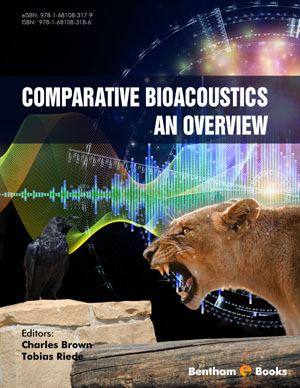Abstract
SHS investigation development is considered from the geographical and historical viewpoint. 3 stages are described. Within Stage 1 the work was carried out in the Department of the Institute of Chemical Physics in Chernogolovka where the scientific discovery had been made. At Stage 2 the interest to SHS arose in different cities and towns of the former USSR. Within Stage 3 SHS entered the international scene. Now SHS processes and products are being studied in more than 50 countries.
Abstract
Animal vocalizations range from tonal sounds produced by almost periodic vocal fold vibrations to completely aperiodic sounds generating noisy signals. Between these two extremes, a variety of nonlinear phenomena such as limit cycles, subharmonics, biphonation, chaos, and bifurcations have been found. This chapter introduces a concept of nonlinear dynamics and its methodology applicable to bioacoustic data. Since conventional spectral analysis is not sufficient to characterize nonlinear properties of the recorded sound signals, a temporal analysis based upon the method of nonlinear dynamics is developed. First, using a mathematical model of the vocal folds, basics of nonlinear dynamics and bifurcations are illustrated. The temporal analysis is then applied to acoustic data from real animal vocalizations. Our focus is on extracting low-dimensional nonlinear dynamics from several samples of vocalizations ranging from tonal sounds to irregular atonal sounds. We demonstrate that nonlinear analysis is a profitable approach for analyzing mammalian vocalizations with a harmonic composition or low-dimensional chaos.
Keywords:
Animal vocalization, Chaos, Data analysis, Nonlinear dynamics.
Recommended Chapters
We recommend

Authors:Bentham Science Books


 Download PDF Flyer
Download PDF Flyer



